12 Interesting Gray Wolf Facts for Kids 2024
The gray wolf is a canine species commonly found in North America, Europe, and certain parts of Asia. There are over 30 species of wolves, and these creatures are closely related to other wild canines, like coyotes and jackals.
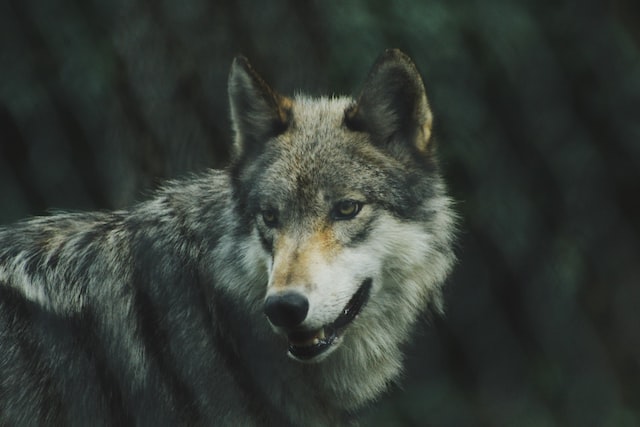
Gray wolves travel in packs consisting of nuclear families. These creatures are majestic and powerful and contribute to the ecosystem in a wide variety of ways. Let’s learn more about them!
Fun Gray Wolf Facts for Kids
Gray wolves live in parts of Europe, Asia, and North America.
While gray wolves live in three of the continents around the world, studies have shown that these creatures have become locally extinct in certain parts of the United States, Europe, and even Mexico. Additionally, they are completely extinct throughout the UK, Japan, and Ireland. The reason that humans have deliberately killed and lessened their population is that these wolves often attack people in populated areas. They also sneak into farms and kill the livestock.
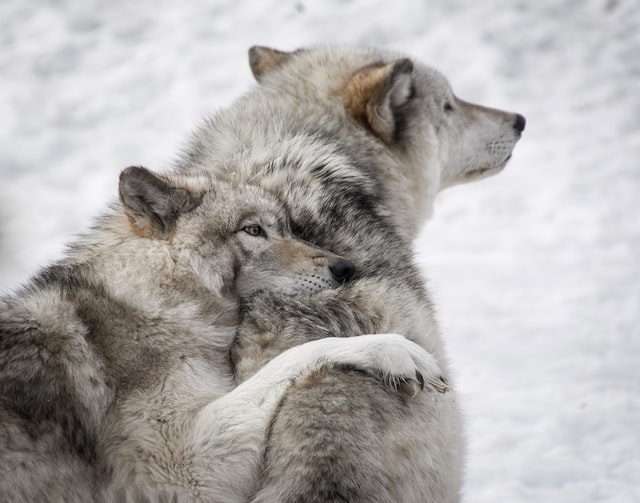
Gray wolves only eat hoofed mammals.
While some carnivorous creatures eat many different kinds of animals, gray wolves have a specific preference. Since they hunt in packs, they prefer eating hooved mammals that are also herbivores. It is worth noting that the types of animals they eat are often divided into three groups, with their varied weights being the distinguishing characteristic. The largest creatures weigh anywhere between 535-1425 pounds, the medium-sized creatures weigh between 51 and 287 pounds, and the smallest creatures resemble the gray wolves physically. The animals that wolves eat include caribou, wild moose, bison, wild boar, and even deer. It’s interesting to note that while a wolf’s diet generally consists of hoofed creatures, they also eat reptiles, rabbits, and salmon, particularly when their main food source is limited in supply or unavailable. They will sometimes eat fruits and plants as well.
Gray wolves communicate with one another by using a variety of different methods.
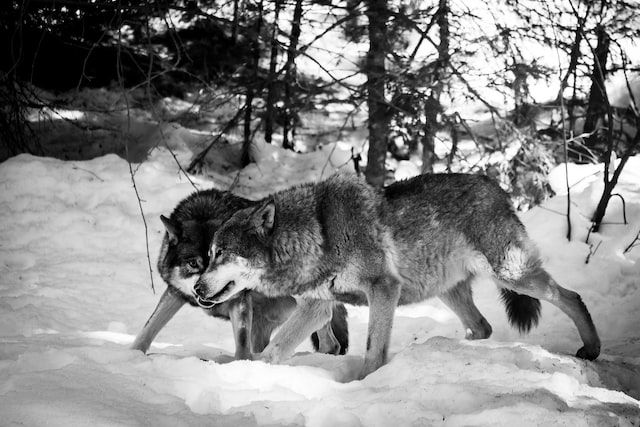
These wolves communicate by using both sounds and physical movement. Before and after hunting, the wolves howl in order to ensure that the pack assembles in a group. They also howl when trying to find each other during rough storms, when they are separated from each other for long distances, and when they cross a new and unknown territory. Gray wolves also whine and growl. In terms of physical communication, these creatures typically move slowly and deliberately when they are angry or aggressive. They also raise their hackles, lower their tails and ears, and flatten their fur when being submissive.
The full moon does not have an effect on gray wolves.

While popular culture and folklore might have made you believe that the full moon has some kind of powerful or magical effect on gray wolves, studies have shown that it does not! Wolves and the moon do not have a symbiotic relationship. Researchers believe that the reason we think that wolves howl when there is a full moon is because of the stories present in Greek and Norse mythology! People in ancient times thought that wolves were the moon’s protectors, and as stories evolved over time, many eventually came to believe that the full moon caused gray wolves to howl.
Gray wolves are monogamous creatures that mate for life.
Since wolves are monogamous animals, that means they mate for life and only seek out a new partner if one of them dies. The wolf population is quite large, which means that when they live in the wild, they do not resort to inbreeding and choose to outbreed instead. Gray wolves become sexually mature at three years old. They usually begin the process of mating when the environmental factors are most suitable. For instance, there must be an adequate amount of food, the age of the female wolf must be young enough to exploit the resources in her environment, and the wolf population must be manageable.
Gray wolves construct their own dens.
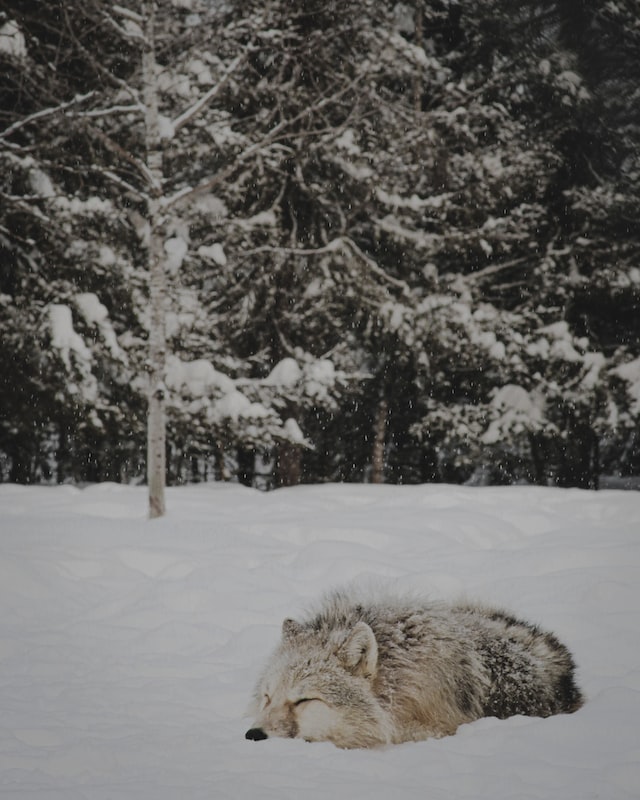
Since female wolves need a safe place to live and give birth to their young, they construct their own dens. The females often try and find a safe place that is close to a water source. Since wolves are resourceful creatures, they usually find shelter in caves and rocks that have been naturally carved into places of shelter. In some cases, gray wolf families live in dens that were previously occupied by foxes or badgers.
Gray wolves take two months to gestate.
The average wolf gestation period lasts for around 60-75 days. Wolves are generally born during the warmer months of the year, particularly during spring and summer. Younger female wolves generally give birth to a small number of pups, while older wolves give birth to upwards of ten pups at a time. When the pups are born, they are deaf and blind, and have a 60-80% chance of surviving.
Gray wolves exhibit unique behavior when hunting.
These creatures typically hunt alone or in pairs. Studies have shown that gray wolves are much more successful when they hunting in small numbers than in packs. However, it is important to note that when hunting in packs, wolves typically work together to bring down a single animal and establish dominance over it; these animals include bison, elk, and moose. Gray wolves make use of their cognitive, psychological, and behavioral abilities when hunting. After studying them in a laboratory setting, researchers have deduced that wolves seem to have the abilities to show insight, planning, and understanding. They are nocturnal predators.
Wolves use the same trails when tracking their prey.
When wolves are tracking a certain type of prey, they typically remain within their marked territory, utilizing the same trails repeatedly. These trails are often near bodies of water, like rivers or lakes. Additionally, they prefer hunting in areas with low shrubs, ravines, and along man-made roads or paths. They usually hunt at night and ambush their prey, ensuring that the preyed-on animal doesn’t have any time to run away.
Wolves follow a specific method of killing their prey.

When gray wolves catch an animal as prey, they usually follow a specific method that helps kill it quickly. First, the wolf will bite through its hair, and then its hide. The wolf will bite it hard enough to ensure that the animal cannot get away easily or at all, and then it will begin to feed on the animal properly. If the prey animal is extremely large, the wolf will use its masseter muscles and fangs to deliver a bite strong enough to break the prey’s skull open. If the animal is small, the wolf will typically bite the animal’s throat. This type of bite severs the nerves and kills the animal almost instantly.
Gray wolves carry many dieases.
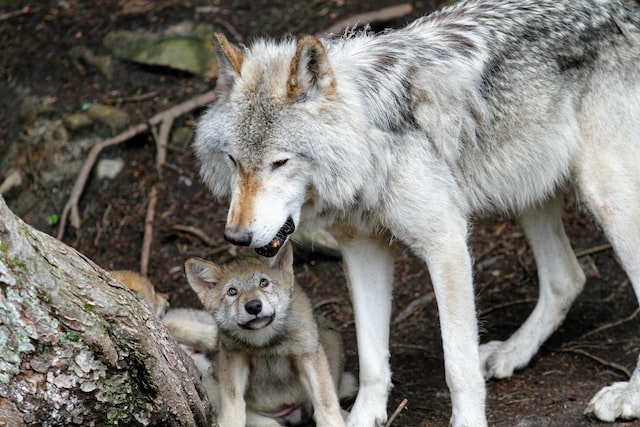
While these animals play an important role in the ecosystem, they are also hosts for different diseases and types of bacteria. Some of the diseases they carry include canine coronavirus, rabies, canine distemper, and infectious canine hepatitis. Wolves found in countries like India, Iran, and Russia and major carriers of rabies. Some of the bacteria that they carry include anthrax, Lyme disease, and bovine tubercolosis.
Gray wolves have played an important roles in folklore, literature, and fables.
One of the most interesting features of gray wolves is that they have had a relationship humans for hundreds of years now! In European literature, wolves were considered to be faithful pets and the gods of war and agriculture. A Native American group called the Navajo believed that witches wore wolf skin after turning themselves into wolves, and killing people in graveyards. Wolves were also featured heavily in many of Aesop’s fables, in the Bible, and in The Jungle Book, written by Rudyard Kipling.
Conclusion
Gray wolves are under threat in some parts of the world, and are important for the world’s ecosystem. These creatures are strong and powerful, and in this article we walked you through some fun facts about them! From the role they played in literature and world culture to their varied hunting habits, we made sure to include information that painted a varied picture of them. We hope you learned something new today!
